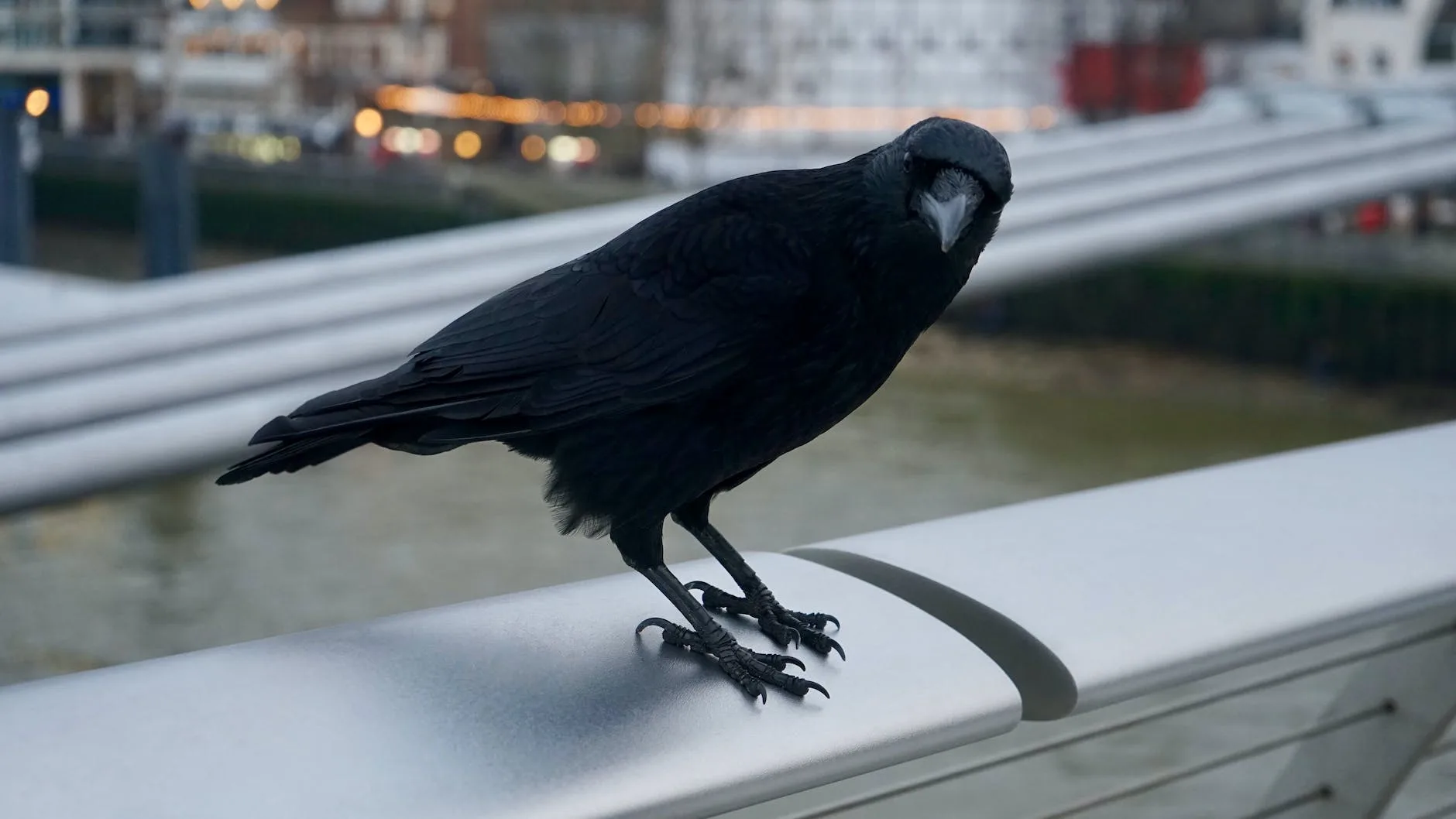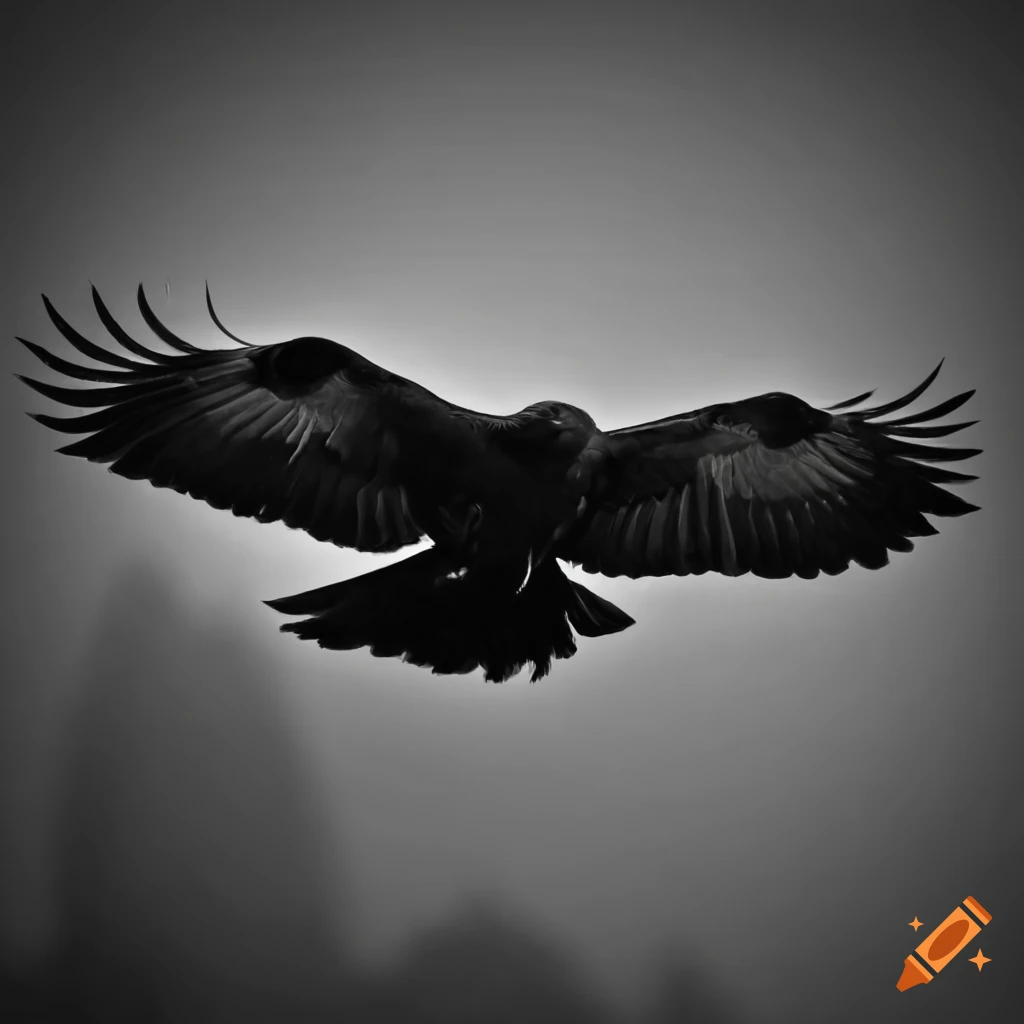Eastern Africas Avian Marvel: Delving into the Somali Crow Species
December 30, 2023 | by BlackCrow.com

Introduction to the Somali Crow
The Somali Crow (Corvus edithae Lort Phillips, 1895) is a remarkable avian species found in Eastern Africa. In this section, we will provide an overview of this crow species, including its unique characteristics and geographic distribution.
Overview of the Somali Crow Species
The Somali Crow, also known as Edith’s Crow, is a medium-sized member of the Corvidae family. It is endemic to the Horn of Africa, specifically found in Somalia, Djibouti, and parts of northeastern Ethiopia. This species is highly adapted to the arid and semi-arid regions of Eastern Africa.
Unlike some other crow species, the Somali Crow possesses distinct physical characteristics that set it apart. Its plumage is predominantly black, with a glossy appearance. The bill is relatively large and sturdy, allowing the crow to forage for a variety of food sources in its habitat. The Somali Crow also has a unique call, which is distinct from other crow species found in the region.
Geographic Distribution and Habitat
The Somali Crow is primarily found in the arid and semi-arid regions of Eastern Africa, specifically the countries of Somalia, Djibouti, and northeastern Ethiopia. It is well adapted to these harsh blackcrow environments, where it inhabits open woodlands, savannas, and thorny scrublands.
This crow species thrives in areas with scattered trees and shrubs, often found near water sources. Its ability to survive and thrive in these arid habitats showcases its remarkable adaptability to challenging ecological conditions.
Understanding the distribution and habitat preferences of the Somali Crow is essential for conservation efforts and ensuring the long-term survival of this avian marvel. To learn more about other crow species found around the world, visit our articles on pied crow, white-necked raven, and American crow.
Physical Characteristics of the Somali Crow
The Somali Crow (Corvus edithae Lort Phillips, 1895) is a fascinating avian species found in Eastern Africa. Let’s explore its size, appearance, as well as its unique features and adaptations.
Size and Appearance
The Somali Crow is relatively small compared to other crow species. On average, they measure around 41 centimeters (16 inches) in length. They have a distinct black plumage that covers their entire body, including their feathers, beak, and legs. The feathers are glossy and have a slight iridescent sheen, giving them a sleek and striking appearance.
Unique Features and Adaptations
One of the notable features of the Somali Crow is its slightly curved beak, which is characteristic of the crow family (Corvidae). This beak shape enables them to access a variety of food sources, including insects, fruits, and carrion. Their beaks are also strong and sharp, allowing them to manipulate objects and extract food efficiently.
In addition to their beak, the Somali Crow has adaptations that help it thrive in its natural habitat. They have well-developed wings, enabling them to fly swiftly and navigate through their surroundings with agility. Their strong legs and feet are adapted for perching and walking on various surfaces, including tree branches and the ground.
The Somali Crow’s vocalizations are another unique aspect of their behavior. They communicate with a range of calls, including caws, croaks, and various other vocalizations. These vocalizations serve multiple purposes, such as defending territory, warning of danger, and communicating within their black crow social groups.
Understanding the physical characteristics of the Somali Crow provides valuable insights into their appearance and adaptations. In the next section, we will delve into their behavior and social structure, shedding light on their feeding habits, breeding behavior, and more.
Behavior and Social Structure
Understanding the behavior and social structure of the Somali Crow provides valuable insights into the daily lives of these avian marvels.
Feeding Habits and Diet
The Somali Crow, like other members of the Corvus genus, is an opportunistic omnivore. Their diet consists of a diverse range of food sources, allowing them to adapt to various environments and habitats. They primarily feed on:
- Insects
- Small vertebrates
- Seeds
- Fruits
- Nectar
- Carrion
These crows are highly skilled foragers and have been observed using tools to extract food from crevices or to probe the ground for insects. Their intelligence and problem-solving abilities contribute to their success in finding food in different ecological niches.
To learn more about the feeding habits of other crow species, such as the Pied Crow or the White-necked Raven, visit our blog.
Breeding and Nesting Behaviors
The breeding season of the Somali Crow usually occurs during the dry months when food resources are more abundant. These crows are monogamous and form long-term pair bonds. The male and female work together to build a nest, which is typically located high in a tree or on a cliff ledge.
The nest is a sturdy construction made of twigs, leaves, and other plant material. It provides a safe and secure environment for the incubation and rearing of their offspring. The female lays a clutch of eggs, usually 2-4 in number, and both parents take turns incubating them.
After an incubation period of approximately 18-20 days, the eggs hatch, and the parents diligently care for the nestlings. They feed them a varied diet, consisting of insects, small vertebrates, and regurgitated food. The nestlings remain in the nest for several weeks before they fledge and begin to explore their surroundings.
To delve into the breeding and nesting behaviors of other crow species, such as the Australian Raven or the Hooded Crow, visit our blog.
Understanding the behavior and social structure of the Somali Crow sheds light on their ecological role, as well as their cultural significance in Eastern Africa.
Conservation Status and Threats
As with many species, the Somali Crow (Corvus edithae Lort-Phillips, 1895) faces challenges in terms of its conservation status and ongoing threats. Understanding these factors is vital to ensure the long-term survival of this unique avian species in Eastern Africa.
Population and Conservation Efforts
The population of the Somali Crow is currently estimated to be small and fragmented. It is primarily found in areas of eastern Ethiopia and northern Somalia. Due to its limited range and localized distribution, the species is considered vulnerable according to the International Union for Conservation of Nature (IUCN) Red List.
Conservation efforts for the Somali Crow are focused on understanding its habitat requirements, population dynamics, and promoting conservation awareness among local communities. Research studies and monitoring programs are being conducted to gather crucial data on population size, black crow breeding patterns, and habitat preferences. These efforts help in formulating targeted conservation strategies to protect the species.
Threats to the Somali Crow
The Somali Crow faces various threats that contribute to its vulnerable conservation status. These threats include:
- Habitat Loss: The conversion of natural habitats into agricultural lands, urbanization, and infrastructure development poses a significant threat to the Somali Crow. Deforestation and land degradation reduce suitable nesting and foraging sites, negatively impacting the population.
- Climate Change: Changes in climate patterns, including increased temperatures and altered rainfall patterns, can have adverse effects on the Somali Crow. These changes may disrupt breeding cycles, food availability, and overall habitat suitability.
- Poisoning and Hunting: The use of pesticides and poisons for agricultural purposes can inadvertently harm the Somali Crow. Additionally, hunting and trapping for cultural or economic reasons pose a direct threat to the species.
- Competition and Predation: The Somali Crow faces competition from other bird species, such as the Pied Crow (Corvus albus Müller, PLS, 1776), which may outcompete it for resources. Predation by other birds of prey and mammals can also impact the population.
Efforts are being made to address these threats and mitigate their impact on the Somali Crow. Conservation organizations, researchers, and local communities collaborate to implement measures such as habitat restoration, sustainable land-use practices, and public education to raise awareness about the importance of protecting this avian marvel.
Understanding the conservation status and threats faced by the Somali Crow is crucial for developing effective strategies to ensure its survival. Continued research, conservation initiatives, and community involvement are essential in safeguarding this unique species and its ecological role in Eastern Africa.
Importance of the Somali Crow in Eastern Africa
The Somali Crow (Corvus Edithae Lort Phillips, 1895) holds significant ecological and cultural importance in Eastern Africa. Let’s explore its ecological role and impact as well as its cultural significance and folklore.
Ecological Role and Impact
The Somali Crow plays a crucial role in the ecosystems of Eastern Africa. As an omnivorous species, it helps maintain the balance by consuming a variety of food sources. Its diet includes fruits, insects, small vertebrates, and carrion, making it an important scavenger and seed disperser.
By consuming fruits, the Somali Crow aids in seed dispersal, contributing to the regeneration and diversity of plant species in its habitat. Additionally, its feeding habits on insects help control their populations, exerting a positive influence on the local ecosystem.
This avian marvel also serves as a potential prey species for larger predators, contributing to the intricate web of predator-prey interactions in the region. Its presence and role within the food chain make it an integral part of the Eastern African biodiversity.
Cultural Significance and Folklore
The Somali Crow holds cultural significance among the communities of Eastern Africa. In different cultures and folklore, blackcrows are often associated with various symbolic meanings. While the exact cultural significance may vary across different communities, they are frequently associated with intelligence, wisdom, and even spiritual beliefs.
Furthermore, crows have been featured in traditional stories and myths passed down through generations. These stories often depict the Somali Crow as a clever and resourceful creature, teaching valuable lessons and embodying certain virtues.
The cultural significance of the Somali Crow is a testament to the deep connection between nature and human societies, highlighting the importance of conservation efforts to protect and preserve this remarkable species.
By understanding the ecological role and cultural significance of the Somali Crow, we can appreciate the intricate relationships between humans, wildlife, and the environment. It serves as a reminder of the importance of black crow biodiversity conservation and the need to safeguard these avian marvels for future generations to cherish.
RELATED POSTS
View all


